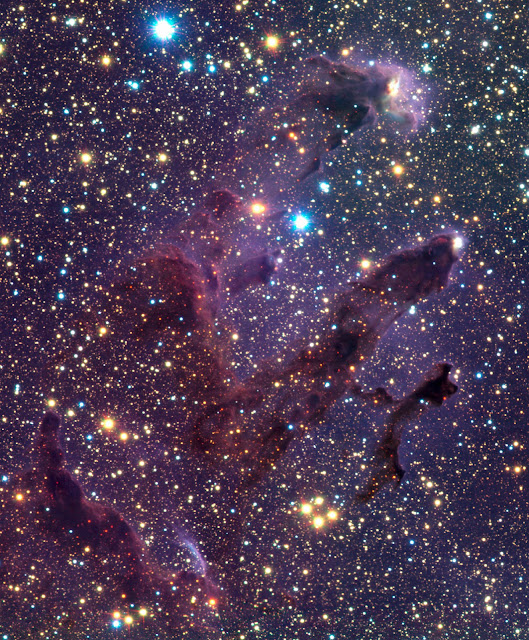NASA's Mars Curiosity & Perseverance Rovers: New July 2022 Images | JPL
MSL - sol 3545 - Mastcam
NASA/JPL-Caltech/MSSS/Kevin M. Gill
MSL - sol 3544 - Mastcam
NASA/JPL-Caltech/MSSS/Kevin M. Gill
MSL - sol 3544 - Mastcam
NASA/JPL-Caltech/MSSS/Kevin M. Gill
MSL - sol 3544 - Mastcam
NASA/JPL-Caltech/MSSS/Kevin M. Gill
MSL - sol 3544 - MAHLI
NASA/JPL-Caltech/MSSS/Kevin M. Gill
Mars2020 - sol 507 - Mastcam-Z
NASA/JPL-Caltech/ASU/Kevin M. Gill
Mars2020 - sol 507 - Mastcam-Z
NASA/JPL-Caltech/ASU/Kevin M. Gill
MSL - sol 3545 - Mastcam
NASA/JPL-Caltech/MSSS/Kevin M. Gill
Curiosity Rover Update for July 28, 2022
Sols 3546-3547: Staring at the Ground (excerpt)
Written by Keri Bean and Kristin Bennett
Today’s plan is chock full of goodies! We start out sol 3546 with a ChemCam observation of a sand ripple “Deposito” and an RMI observation of the Bolivar outcrop in the distance. Then we’ll do some Mastcam observations of Deposito, “Lilas” which is one of our robotic arm targets later in the sol, Bolivar, and “Deepdale.” Once all that wraps up, we’ll get into our robotic arm activities for the sol!
Today I (Keri) was the Arm Rover Planner, which means I was responsible for writing up the commands for the robotic arm activities in this plan. I noticed this lovely rock in our workspace. The top of it looked like a nice large flat spot where we could use our DRT to brush off some dust! The scientists also were thinking the same thing and agreed, so we added it to the plan. The scientists are also interested in the rough face pointing at the rover, so we are also taking some MAHLI images of that rough face “Simoni” followed by brushing away the surface dust on the top of the rock with DRT and taking some MAHLI and Mastcam images of Lilas.
Once the arm activities wrap up, we’ll begin driving!
During the drive, the science team decided to add in an observation that we don’t often use: a MARDI sidewalk observation. MARDI is a camera that is pointing down at the ground.
After all that completes, we will take some post-drive imaging with Hazcams, Navcams, and Mastcams which will help the next planning team determine their activities...
Full article: https://mars.nasa.gov/msl/mission-updates/9235/sols-3546-3547-staring-at-the-ground/
Perseverance Rover Update for July 21, 2022
Laser Marking on Mars
Written by Roger Wiens, Principal Investigator, SuperCam/Co-Investigator, SHERLOC instrument at Purdue University
https://mars.nasa.gov/mars2020/mission/status/393/laser-marking-on-mars/
Mission Name: Mars Science Laboratory (MSL)
Rover Name: Curiosity
Main Job: To determine if Mars was ever habitable to microbial life.
Launch: Nov. 6, 2011
Landing Date: Aug. 5, 2012, Gale Crater, Mars
Mission Name: Mars 2020
Rover Name: Perseverance
Main Job: Seek signs of ancient life and collect samples of rock and regolith (broken rock and soil) for possible return to Earth.
Launch: July 30, 2020
Landing: Feb. 18, 2021, Jezero Crater, Mars
For more information on NASA's Mars missions, visit: mars.nasa.gov
Image Release Dates: July 24-29, 2022
#NASA #Space #Astronomy #Science #Mars #RedPlanet #Planet #Astrobiology #Geology #Boulders #MountSharp #GaleCrater #Curiosity #Rover #Robotics #Technology #Engineering #JPL #Pasadena #California #UnitedStates #JourneyToMars #CitizenScience #STEM #Education






































